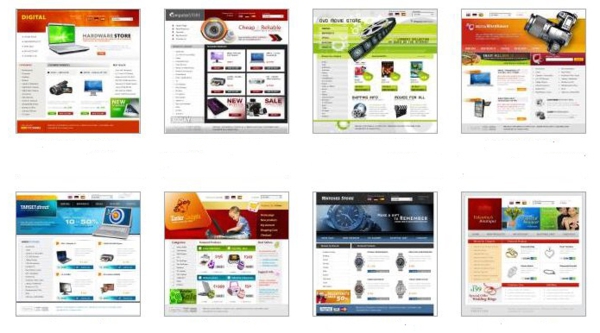When you start an ecommerce website, the process can be stressful. You work for many hours trying to advertise your business, bring in traffic, and make a profit on your business. With so many other ecommerce websites out there, it can be hard to make your business stand out. Using metric research can help you determine the success rate of your business and help you discover areas where you can change your business practices to make other areas of your site more profitable. These seven ecommerce solutions will help you improve the quality of your site while increasing overall profit at the same time. Many of these metric reports come standard in most ecommerce hosting platforms, while others require a small additional fee to unlock.

1. Examine profits and revenue
Obviously, if your website is not bringing in money, then you are not making a profit. Study this metric to discover how much revenue your website brings in. In addition to this metric, you should also keep your own stats for your company costs and compare the two numbers. Ideally, your revenue should be higher than your costs. If they are not, you can try to reduce costs, or increase business on your site to make additional sales.
2. Study traffic
Traffic is the lifeblood of any ecommerce site. Study these stats carefully so you know exactly where your traffic comes from and places you can boost it. Check to see where your traffic comes from, whether it is from search engines or referral sites, look for the top 10 keywords that bring visitors to your site, whether you see consistent traffic month by month, if your advertising methods are bringing in new traffic, and how many traffic visitors are repeat visitors versus new customers. Studying this metric data can help you find new ways to advertise and expand your business.
3. Expand connections
The connections you make with customers are important. The connections people use while visiting your site are just as important as the connections you start with marketing campaigns. Look at how long people stay on your site on average and how many leave after the first page. If a lot of people leave after one page, try to make your home page more enticing to visitors. Try to connect with customers on social media platforms, like Facebook, Twitter, or with e-mail subscriptions for coupons and sales announcements. The more people you connect with, the more sales you will bring in.
4. Experiment with conversions
A conversion rate shows you how effective your paid marketing campaigns are in relation to final sales. Some ecommerce sites allow you to view your conversion rates from their hosting platform, but if your site doesn’t have this option, you can always use the conversion data provide in Google Analytics. Studying this data can help you determine which marketing campaigns are effective, and which ones you can abandon or should change to increase overall sales.
5. Abandonment rates
An abandonment is when a customer starts to make a purchase, such as by adding items to a cart, then abandoning the cart and not completing the purchase. Your ecommerce platform host can help you find your abandonment rate. One thing that may cause customers to abandon a cart is the high cost of shipping. Adding discounted shipping rates or other incentives to complete a purchase can help lower your abandonment rate.
6. Study repeat customers
Repeat customers really love your brand and the products you offer. You want the highest number of repeat customers possible to really maximize your retail sales and profits. Follow-up e-mails to past customers can help bring these shoppers back to your site for new purchases. Interaction with customers through social media or e-mail newsletters is also a great way to keep people returning for new purchases.
7. Explore top products
Look at the products that customers buy most often from your site. Consider offering additional similar products, or replacing some of the poorer selling items with more of the higher selling items. Think about what makes these products popular, and try to offer the same quality and features in the other products on your site to boost sales and increase customer retention.
This is a guest post by Andras Deak, an occasional blogger and a full-time online marketing consultant. Currently he works for Code23, a UK based web development company, building one of the best ecommerce solutions out there. When not working, Andras likes to travel a lot and do a wide range of great sports.
Top 7 Metrics For eCommerce Sites

